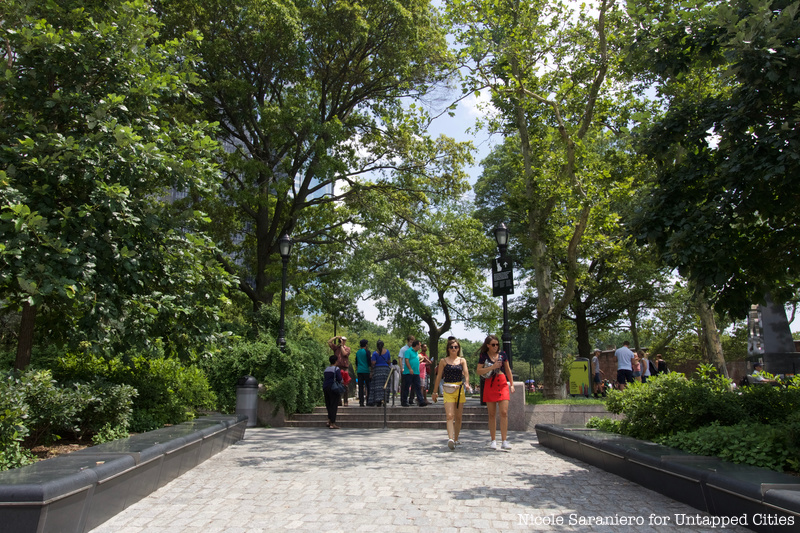3. The Battery (1790s and later)

The Battery (formerly known as Battery Park), located at the southern tip of Manhattan Island facing New York Harbor, is named for the artillery batteries built in the late 17th century to protect the settlement behind them. Prior to settlement, the area was originally occupied by the Lenape Native Americans and later populated by Dutch settlers, before the British took over the settlement in 1664 and renamed the site Fort James and later Fort George. American troops commandeered the fort during the Revolutionary War. At the end of the war in 1783, the site was the center of celebrations on Evacuation Day, when the last British troops fled the United States.
Its life as a public space begins around 1790, following the end of the American Revolution. According to the website of The Battery, “The Battery is transformed into a public promenade for walking and leisure,” following the demolition of Fort George and it expands several times over the years. The decommissioning of Castle Clinton, a fort built just before the War of 1812, and the repurposing of the structure as a public attraction solidifies its destination status. In 1855, the water between Castle Clinton and The Battery is filled in and in 1870 efforts are made to restore “the tree-shaded area as Lower Manhattan’s favorite park,” according to The New York Chronology by James Traeger.
Today, the park is home to several monuments and attractions, in addition to Castle Clinton Visitors can also see various military memorials including the East Coast Memorial, dedicated to those missing in World War II, and American Merchant Mariners’ Memorial, the Korean War Memorial, and several others. You can even camp in The Battery this month!





